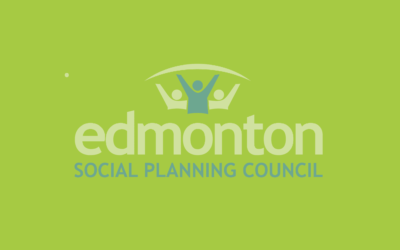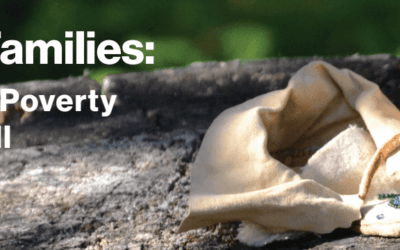Blog: Homeless Encampments in Edmonton: An Individualized Symptom of Systemic Homelessness

As the rate of encampments rise, so does the need for innovative, human rights-based interventions. This post explores encampments as a response to the systemic problem of homelessness and prompts readers to consider responses which center the needs and rights of the individual experiencing homelessness
By Jordan Clark Marcichiw, ESPC Volunteer
What Are Encampments?
“While they vary in size and structure, the term ‘encampment’ is used to refer to any area wherein an individual or a group of people live in homelessness together, often in tents or other temporary structures (also referred to as homeless camps, tent cities, homeless settlements, or informal settlements)” (Farha & Schwan, 2020).
As the rates of people experiencing homelessness in Canada rise, so too do the rates of encampments (Farha & Schwan, 2020). Unfortunately, due to issues such as colonization and systemic injustices, some people are more likely to experience homelessness. Indigenous Peoples are significantly overrepresented in the homeless population in Canada, as well as young people aged 13-24 who account for about 20% of this population, one third of which identify as a LGBTQ2S+ (Homeless Hub, n.d.B). Despite the root causes of homelessness being large scale structural issues (Homeless Hub, n.d.A), the need for encampments is commonly misunderstood as resulting from individual shortcomings. A study which scanned Twitter for common discourses among tweets containing the word “homeless” found several stigmatizing themes including the notion that people experiencing homelessness are dirty, socially deviant, “scam artists”, violent, sexual predators, criminals, and deserve to be homeless due to addictions and laziness (Vitelli, R., 2021). This stigma is highly problematic and causes unjust and harmful responses to encampments, leading to further marginalization of people experiencing homelessness.
Why Choose Encampments?
A common argument towards dismantling encampments is that shelters already exist to provide housing to people experiencing homelessness. Shelters offer a designated space for individuals to rest, access services, and escape the extremities of Albertan weather – so why would people opt for encampments over permanent shelters?
Brown et. al (2022) offer several explanations:
- Encampments create a sense of community and belonging for residents.
- Encampments provide more freedom for residents (e.g., they can come and go as they’d like and can self-govern).
- Individuals accessing shelters report feeling as if they are guests who are expected to only access services in the short-term.
- Shelter availability is minimal and often not appropriate for all individuals. Bed shortages remain an issue.
- Shelters require check-ins at a certain hour, resulting in many people being turned away if they attend late. The unpredictability of shelters may dissuade individuals.
- Sobriety requirements are frequently included in shelter policies, thus resulting in people being turned away.
- Shelters are often unsafe due to threats of theft and conflict with other residents.
- Shelters are not appropriate for all families (for example, some shelters only accept female residents). Pets are usually not permitted in shelters.
Encampments in Edmonton
Many encampments can be found throughout Edmonton, resulting in many conversations on how best to respond to them and the needs of those experiencing homelessness. Edmonton’s response is determined by the risk level of the encampment, designated high or low, and involves the Encampment Response Team, a partnership between the City of Edmonton, Homeward Trust, Boyle Street Community Services, Bissell Centre, and the Edmonton Police Service (City of Edmonton, n.d.). The City defines “High risk” encampments as presenting risks such as size, biohazards, needles, garbage, fire, and proximity to schools or playgrounds, and are closed within 1-3 days by Peace Officers and the Edmonton Police Service. The Encampment Response Team is responsible for closing “low risk” encampments (encampments which do not present the same risks mentioned above) by setting a date ahead of time and offering outreach support to connect residents to housing and health support.
Critics argue the City’s encampment response, which was set up to prevent another large encampment similar to Camp Pekiwewin, has no lasting effect in supporting these individuals and does nothing but displace the encampments to other neighbourhoods (Riebe, 2022). Pekiwewin, Cree for “coming home,” was set up on July 24th, 2020, by frontline workers and Indigenous-led community organizers and hosted approximately 400 Edmontonians per day for food, services, and a place to camp (Omstead, 2020). The camp was closed after four days notice on November 12, 2020, and residents were redirected to existing shelters (Mertz, 2020).
More recently, council denied the potential of piloting a city-run encampment with amenities such as washrooms, food, and on-site social services due to the pilot’s difficult set-up and cost, as well as the potential of causing “problems for neighbours” (Boothby, 2022). Council has indicated they will continue to discuss potential responses to encampments but have not committed to any strategies thus far.
What Can We Do?
We need to shift perspectives of encampments away from our current stigmatized understanding towards one which respects the inherent dignity and worth of all individuals, regardless of their housing status. As community members, an essential first step is reflecting on our own views of people residing in encampments. Are we directly or indirectly contributing to the stigmatization of people experiencing homelessness? Are we advocating for their inclusion, or are we supporting policies which further marginalize these members of our community? Holding our government leaders accountable is another important step in supporting individuals accessing encampments. Supporting council members and political parties who are willing to invest in addressing housing issues can make a huge difference in the lives of many people experiencing homelessness.
Brown et. al (2022) offer several recommendations to respond to encampments from a human rights lens based on the National Protocol for Homeless Encampments in Canada. The full report, including recommendations, can be found here. Essentially, the authors argue that our response to encampments must not substitute addressing homelessness and must be done so with human right principles in mind at every step.
“The creation of more permanent affordable housing, including supportive housing, is the only long-term solution to…unsheltered homelessness. Encampments are but one symptom of…unsheltered homelessness” (Brown et. al, 2022).
Did You Enjoy this Blog? Please provide us feedback here
Jordan Clark Marcichiw (she/her), is a volunteer with Edmonton Social Planning Council and is a social worker who is passionate about spreading knowledge and advocating for systems change for the betterment of all individuals. Her personal interests include hiking, kayaking, skiing, playing slopitch, reading, and adventuring with her pup.
References
Boothby, L. (2022, July). Edmonton won’t pilot city-run homeless encampments this summer. Edmonton Journal. https://edmontonjournal.com/news/local-news/edmonton-wont-run-city-sanctioned-homeless-encampment
Brown, A., Gillies, S., Marshall, V., Mcgurk, H. & Pin, L. (2022, September). Homeless encampments through a human rights lens. Wilfred Laurier University. https://www.homelesshub.ca/sites/default/files/attachments/homeless-encampments-through-a-human-rights-lens.pdf
City of Edmonton (n.d.). Responding to homelessness in our communities. https://www.edmonton.ca/city_government/initiatives_innovation/homeless-on-public-lands
Farha, L. & Schwan, K. (2021, April). A national protocol for homeless encampments in Canada. UN Special Rapporteur on the Right to Housing. https://www.make-the-shift.org/wp-content/uploads/2020/04/A-National-Protocol-for-Homeless-Encampments-in-Canada.pdf
Homeless Hub (n.d. a). Causes of homelessness. https://www.homelesshub.ca/about-homelessness/homelessness-101/causes-homelessness
Homeless Hub (n.d. b). Who is homeless? https://www.homelesshub.ca/about-homelessness/homelessness-101/who-homeless
Mertz, E. (2020, November). Camp Pekiwewin in Rossdale closed, police and city crews on site. Global News. https://globalnews.ca/news/7458802/camp-pekiwewin-in-rossdale-closed-police-and-city-crews-on-site/
Omstead, J. (2020, August). ‘This is about prayer’: Inside Edmonton’s Camp Pekiwewin. CBC News. https://www.cbc.ca/news/canada/edmonton/this-is-about-prayer-inside-edmonton-s-camp-pekiwewin-1.5682391
Riebe, N. (2022, September). Residents, businesses take aim at Edmonton’s approach to homeless camps. CBC News. https://www.cbc.ca/news/canada/edmonton/residents-businesses-take-aim-at-edmonton-s-approach-to-homeless-camps-1.6586482
Smith, K. (2022, August). Edmonton seeing 25% increase in encampment complaints over last year. Global News. https://globalnews.ca/news/9080515/edmonton-increase-homeless-encampment-complaints/
Vitelli, R. (2021, June). Why is homelessness so stigmatized? Psychology today. https://www.psychologytoday.com/ca/blog/media-spotlight/202106/why-is-homelessness-so-stigmatized




